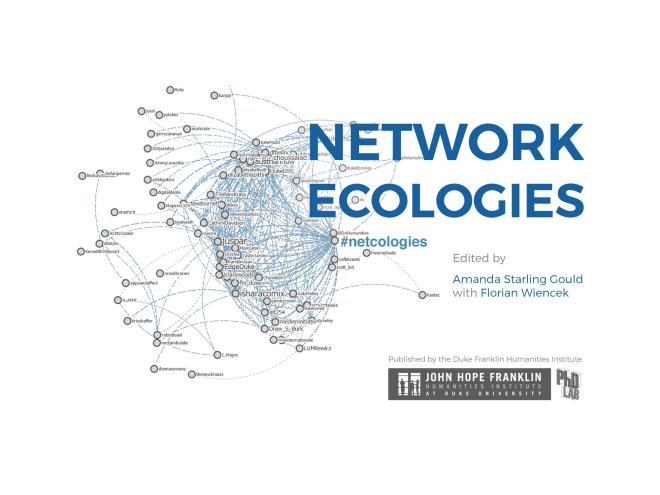
Making Mining Networking, a collection of works by Karin Denson and myself, opened yesterday at Duke University’s digital research, collaboration, and exhibition space The Edge, as part of the Network Ecologies project organized by Amanda Starling Gould. Also on display are fascinating works by Rebecca Norton. The show will run until Fall, so check it out if you get a chance. Be sure to bring along your smartphone or tablet with a QR scanner installed, as all of our pieces are scannable, interactive works that will open an augmented reality browser.
I have previously posted our exhibition statement (here), and our video “Sculpting Data (and Painting Networks)” offers the best introduction to what we’re trying to do in the exhibit. For what it’s worth, though, I also wanted to post a few additional remarks about the title of the collection that I made yesterday in our talk:
The title of our current collection, “Making Mining Networking,” includes a kind of oblique – possibly awkward – reference to Martin Heidegger’s essay “Building Dwelling Thinking” (Bauen Wohnen Denken). This is not in any way a “Heideggerian” exhibit, though; as you’ll see, it includes Marxist subtexts throughout that should militate against that. We are skeptical, in particular, of Heidegger’s Romanticism, but we think that the oblique reference serves to highlight a few things:
First of all, if building and dwelling were the quintessential human activities for Heidegger, our title suggests the possibility of some developments that couldn’t have been anticipated by him and that have to do with the advent of digital media, among other things.
“Building,” which for Heidegger opened up spaces and gathered “worlds” for communities that came into being around the Greek temple or the bridge across a romantic German river, gives way today to more local, far less grand practices of “making”; the maker culture that centers around 3D printing, physical computing, and other technologies might be emblematic of this shift.
And “dwelling,” which for Heidegger described the supposedly authentic mode of existence of mortals upon the earth, becomes infinitely minable today, as mining comes to name physical and virtual processes that transform the mere fact of living into the source of a surplus value that can be accumulated, processed, and exploited.
And finally “thinking,” which for Heidegger implied a profound sort of “questioning,” aimed at getting to “the ground” of Being in all its Romantic mystery, has perhaps given way to a more superficial, also not unproblematic, mode of relating things: the pervasive mode of “networking,” which connects people and things in both systematic and haphazard ways.
Finally, though, the reference to Heidegger is also meant to signal our commitment to interrogating these developments in terms that might indeed resonate, if only awkwardly, with Heidegger’s mode of questioning – in terms, that is, of the impacts that making, mining, and networking, as characteristic activities of our contemporary moment, have on our lifeworlds and on the reorganization of spatial realities through the addition of virtual and augmented layers.
We hope, however, that our mode of interrogating these things is a bit more playful, a lot less earnest, and a lot more fun than Heidegger would approve of…
In that spirit, go check out our data-driven garden gnomes, who are currently residing both in The Edge and all around Duke’s West Campus:







